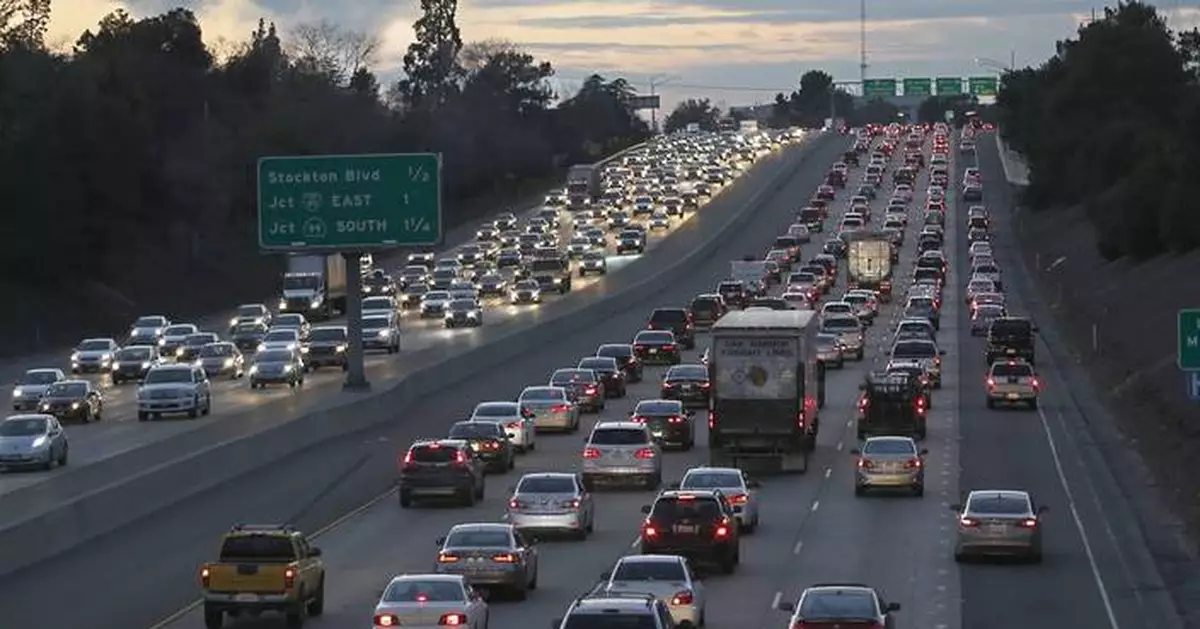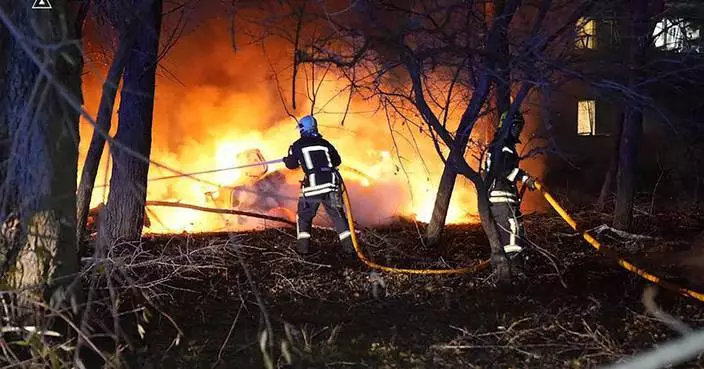DETROIT (AP) — The U.S. government's automobile safety ratings will get a major update starting with the 2026 model year when regulators add new driver-assistance technologies and tests for protecting pedestrians.
The National Highway Traffic Safety Administration said Monday that it has finalized the changes, which were required by Congress under the 2021 bipartisan infrastructure law.
In addition to the five-star ratings for crash tests, the agency will add four new technologies including pedestrian automatic emergency braking, lane-keeping assist, blind spot warning, and intervention if a driver tries to move toward a vehicle in a blind spot.
The new rule also strengthens test procedures and performance standards for technology that's already included in the ratings such as automatic emergency braking.
Transportation Secretary Pete Buttigieg, whose department includes NHTSA, said the previous ratings, which went into effect in 1978, have helped the industry rise to higher safety standards.
The new requirements make sure “that the evaluation of these cars includes not just the safety of people inside vehicles during a crash, but how the design of a vehicle could prevent a crash or make it less fatal for someone outside the vehicle," Buttigieg said in an interview with The Associated Press.
The agency said that the five-star crash test ratings, which most vehicles now get, would not change under the new system. But consumers would also see green check marks on NHTSA's website if vehicles they're shopping for have the safety features, and they can be assured that the features meet standards set by the government, Buttigieg said.
Early on, the features will get a pass or fail grade, but later will get scores so buyers can compare vehicles, he said.
The standards, which will start showing up this coming August, should motivate automakers to speed up deployment of the features, he said. Automakers already use crash test ratings to compete for customers, and Buttigieg expects that to happen with the new features as well.
The safety devices can either be standard equipment or optional, the agency said.
“We hope that this will move the market in that direction, that consumers will have another reason to be conscious that these features exist and then ask whether the car are thinking about buying has those features,” he said.
The new standards also will strengthen test procedures for safety features that are already included such as automatic emergency braking, the agency said. Automatic emergency braking will have to meet tough requirements and be standard equipment on all passenger vehicles by 2029.
The agency also will set design standards to mitigate injuries to pedestrians, following most of the regulations already in effect in Europe. The standards will set a minimum threshold for points of impact and injuries to a pedestrian struck by a vehicle at 25 miles per hour (40 kilometers per hour).
The Alliance for Automotive Innovation, a large industry trade group, said the updated standards are needed. But for the standards to accelerate industry investment, they need to be "updated on a more predictable and frequent cadence,” the association said.
Buttigieg said this is the first of multiple regulations that his department wants to put into effect before the end of President Joe Biden's term of office. He wouldn't say what other regulations could go into effect.
“We’ve been full steam ahead on a number of rulemakings," he said. "We’ve kept that pace up regardless of what we anticipated in the election. So you can expect us to continue to sprint through the tape, especially on rules that we know are going to make a big difference, that we think will be well-received by the public and that we’ve put a lot of work into already.”
Cathy Chase, president of Advocates for Highway and Auto Safety, said the U.S. is still playing catch up to other nations on vehicle standards. She urged the Transportation Department to approve automatic emergency braking for heavy trucks, technology to prevent impaired driving, front passenger and rear seat belt reminders and other pending safety technologies.
The standards, last updated in in 2008 for 2011 models, have brought significant reductions in crashes, deaths and injuries, the agency said. The number of people inside vehicles who were killed in traffic crashes fell from 32,043 in 2001 to 26,325 in 2021. But pedestrian deaths rose 51% to 7,388 during the same period, so improvements are needed, the agency said.
Last year nearly 41,000 people died in traffic crashes nationwide, a 3.6% decline over 2022, according to NHTSA estimates. Fatalities have declined for nine straight quarters.
But deaths spiked in 2021 with a 10.5% increase over 2020 as people started driving more as the COVID-19 pandemic started to ease. That was the highest number since 2005 and the largest percentage increase since 1975.
This story has been corrected to show that safety features can either be standard equipment or options for companies to get credit for having them.
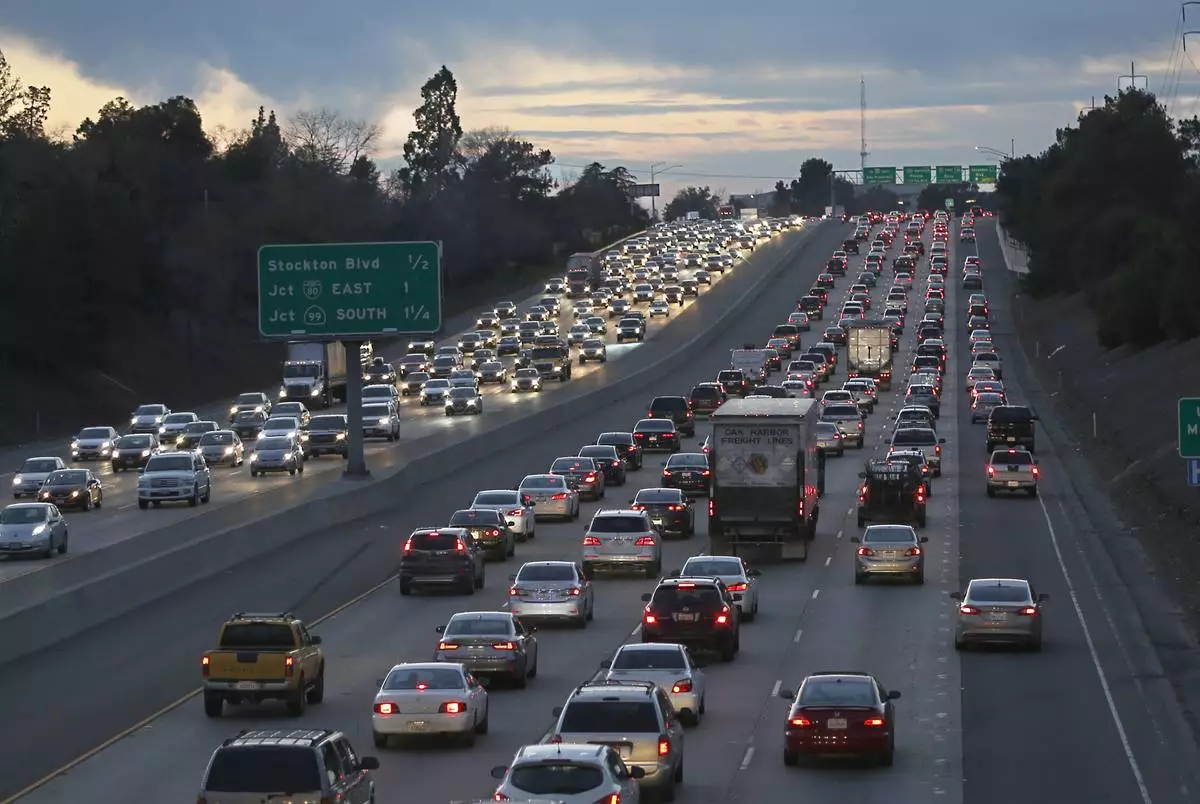
FILE - Evening rush hour traffic fills Highway 50, Jan. 26, 2017, in Sacramento, Calif. (AP Photo/Rich Pedroncelli, File)
ATHENS, Ga. (AP) — An FBI special agent testified Monday that electronic location data seems to place Georgia nursing student Laken Riley and the man accused of killing her in the same wooded area at the time of her death.
Jose Ibarra, 26, is charged with murder and other crimes in Riley’s death in February. He waived his right to a jury trial, meaning Athens-Clarke County Superior Court Judge H. Patrick Haggard is hearing the case and will alone decide on Ibarra's guilt or innocence.
The killing of the 22-year-old woman added fuel to the national debate over immigration during this year's presidential campaign when federal authorities said Ibarra illegally entered the U.S. in 2022 and was allowed to stay in the country while he pursued his immigration case.
FBI Special Agent James Burnie told the court Monday that he reviewed location data from Ibarra's cellphone and Riley's cellphone and smart watch. GPS data from Riley's watch very precisely puts her inside the wooded area with running trails where her body was found on Feb. 22. Pings between Ibarra's phone and cell towers and the fact his phone wasn't making any Wi-Fi connections at the time indicate he was also likely in the woods, Burnie said.
Prosecutors also played a recording of a jail phone call from May between Ibarra and his wife, Layling Franco. FBI specialist Abeisis Ramirez, who translated the call from Spanish, testified that Ibarra told Franco that he had been at the University of Georgia looking for work, and that his wife repeatedly said she was fed up and that she wanted him to tell the truth.
Franco "continues to ask, ‘What happened with the girl?’" and said Ibarra “must know something,” Ramirez said. He responds: “Layling, enough." Ramirez said Franco told Ibarra that it's crazy that police only found his DNA.
Ibarra is charged with one count of malice murder, three counts of felony murder and one count each of kidnapping, aggravated assault, aggravated battery, hindering an emergency telephone call, tampering with evidence and being a peeping Tom.
Ibarra took selfies of himself early on the day Riley was killed, according to testimony from an FBI agent who analyzed data from cellphones seized from the apartment where Ibarra lived with his two brothers and two other people. In the photos, Ibarra is wearing a black Adidas baseball cap and a dark hooded jacket.
A few hours before Riley was killed, a man in a black Adidas baseball cap was captured on surveillance video at the door of a first-floor apartment in a University of Georgia housing complex. A female graduate student who lived there testified Monday that she heard someone trying to get inside her apartment when she was in the shower. As she looked through the peephole, the person ducked and walked away, but then she saw the same person peering into her window, she said.
Police officers using a grainy screen shot from the surveillance video approached a man wearing a black Adidas cap the day after the killing. That turned out to be Diego Ibarra, one of Jose Ibarra's brothers.
University of Georgia police Sgt. Joshua Epps testified that he was called to question Diego Ibarra outside the apartment where the Ibarras lived. Epps testified that the brother had no obvious recent injuries.
Outside the apartment, police also questioned Argenis Ibarra, Jose Ibarra and Rosbeli Elisbar Flores Bello. Epps and Corporal Rafael Sayan, who speaks Spanish and helped with the questioning, testified that they noticed scratches on Jose Ibarra.
When asked why his knuckles were red, Jose Ibarra told them it was because of the cold but didn't really explain several scratches on his arms, Sayan said.
Security video from the apartment complex showed a man wearing a shirt with a distinctive pattern throwing something into a trash bin. A crime scene specialist from the Georgia Bureau of Investigation testified there was a lot of clothing in the one-room apartment but that she didn't find that shirt in the apartment and didn't find any bloody clothing.
A police officer testified Friday that he found a dark hooded jacket in the trash bin seen in the video and that testing revealed Riley's blood on the hoodie.
Flores Bello identified the man in the video as Jose Ibarra and confirmed that identification on the witness stand Monday. She said she had previously seen him wearing the dark hooded jacket and thought it was strange that he threw it away.
Testifying through of an interpreter, Bello said she met Ibarra in Queens, New York. Ibarra's brother, Diego, lived in Athens and had been urging Ibarra to move there, saying they would find work. She traveled with Ibarra to join his brother in Georgia. She said they went to the Roosevelt Hotel, which served as an intake center for migrants, to ask for a “humanitarian flight” to Georgia in September 2023. When they arrived in Atlanta, a friend of Diego Ibarra picked them up and drove them to Athens.
Riley was a student at Augusta University College of Nursing, which also has a campus in Athens, about 70 miles (113 kilometers) east of Atlanta.

Allyson Phillips, mother of Laken Riley, second left, listens during the trial of Jose Ibarra at Athens-Clarke County Superior Court on Monday, Nov. 18, 2024, in Athens, Ga. (Miguel Martinez/Atlanta Journal-Constitution via AP, Pool)

Jason Riley, center, Laken Riley's father, listens during the Jose Ibarra trial at Athens-Clarke County Superior Court on Monday, Nov. 18, 2024, in Athens, Ga. (Miguel Martinez/Atlanta Journal-Constitution via AP, Pool)
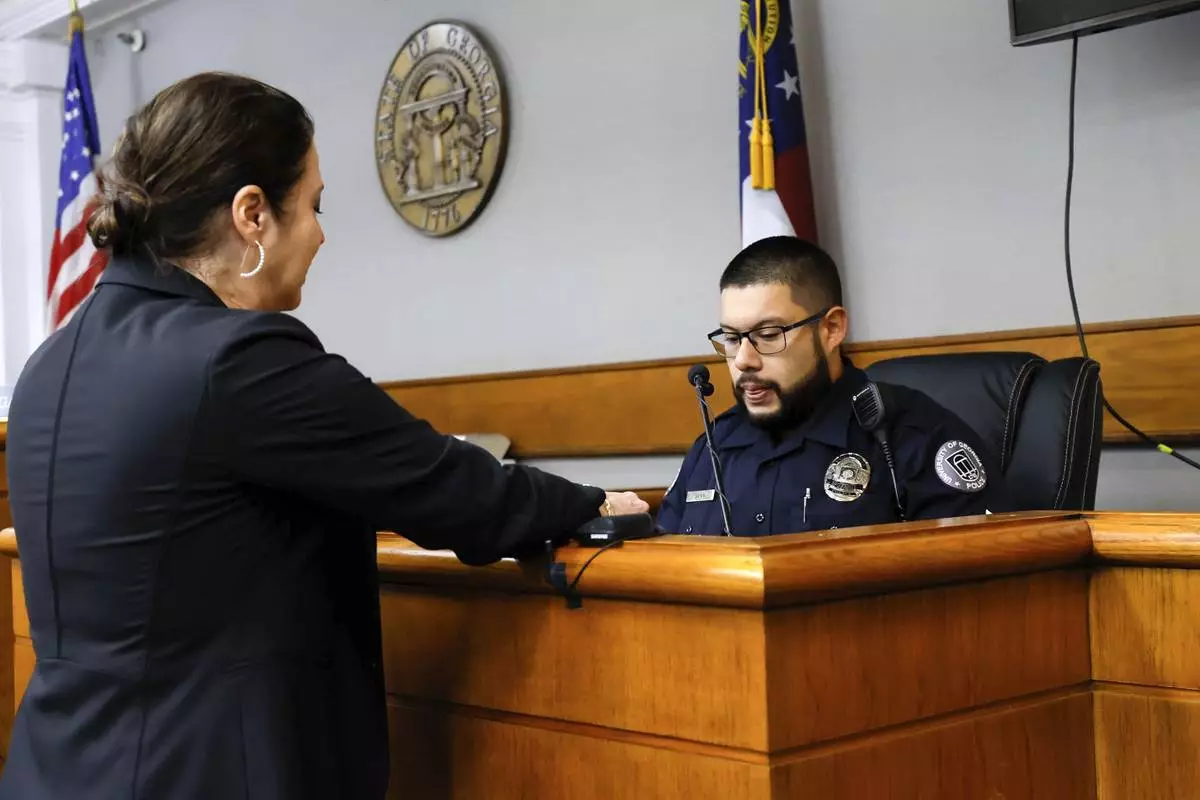
Prosecutor Sheila Ross speaks to the University of Georgia Police Rafael Sayan during the second day of the trial of Jose Ibarra at Athens-Clarke County Superior Court on Monday, Nov. 18, 2024, in Athens, Ga. (Miguel Martinez/Atlanta Journal-Constitution via AP, Pool)
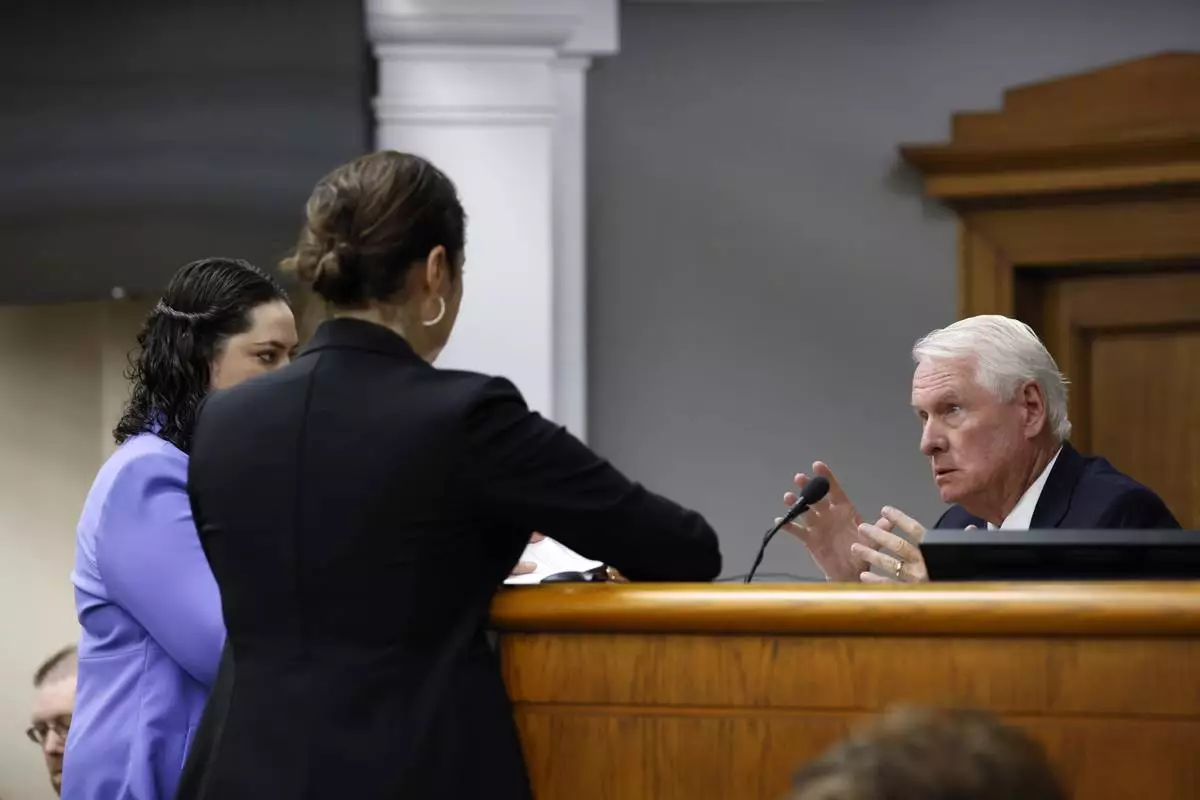
Superior Court Judge H. Patrick Haggard, right, confers with prosecutors and attorneys for Jose Ibarra during the second day of the trial of Jose Ibarra at Athens-Clarke County Superior Court on Monday, Nov. 18, 2024, in Athens, Ga. (Miguel Martinez/Atlanta Journal-Constitution via AP, Pool)

Superior Court Judge H. Patrick Haggard speaks during the trial of Jose Ibarra at Athens-Clarke County Superior Court on Monday, Nov. 18, 2024, in Athens, Ga. (Miguel Martinez/Atlanta Journal-Constitution via AP, Pool)
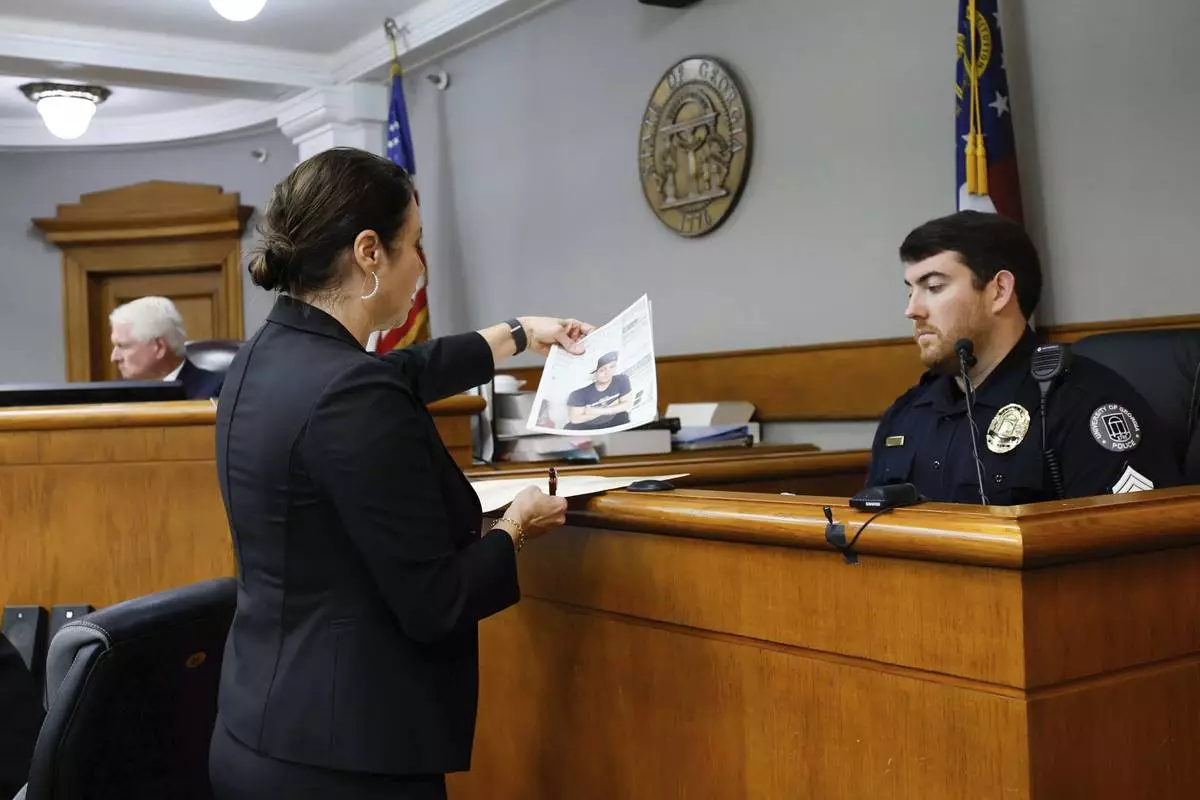
Prosecutor Sheila Ross shows a piece of evidence to University of Georgia Police Josh Epps during the trial of Jose Ibarra at Athens-Clarke County Superior Court on Monday, Nov. 18, 2024, in Athens, Ga. (Miguel Martinez/Atlanta Journal-Constitution via AP, Pool)
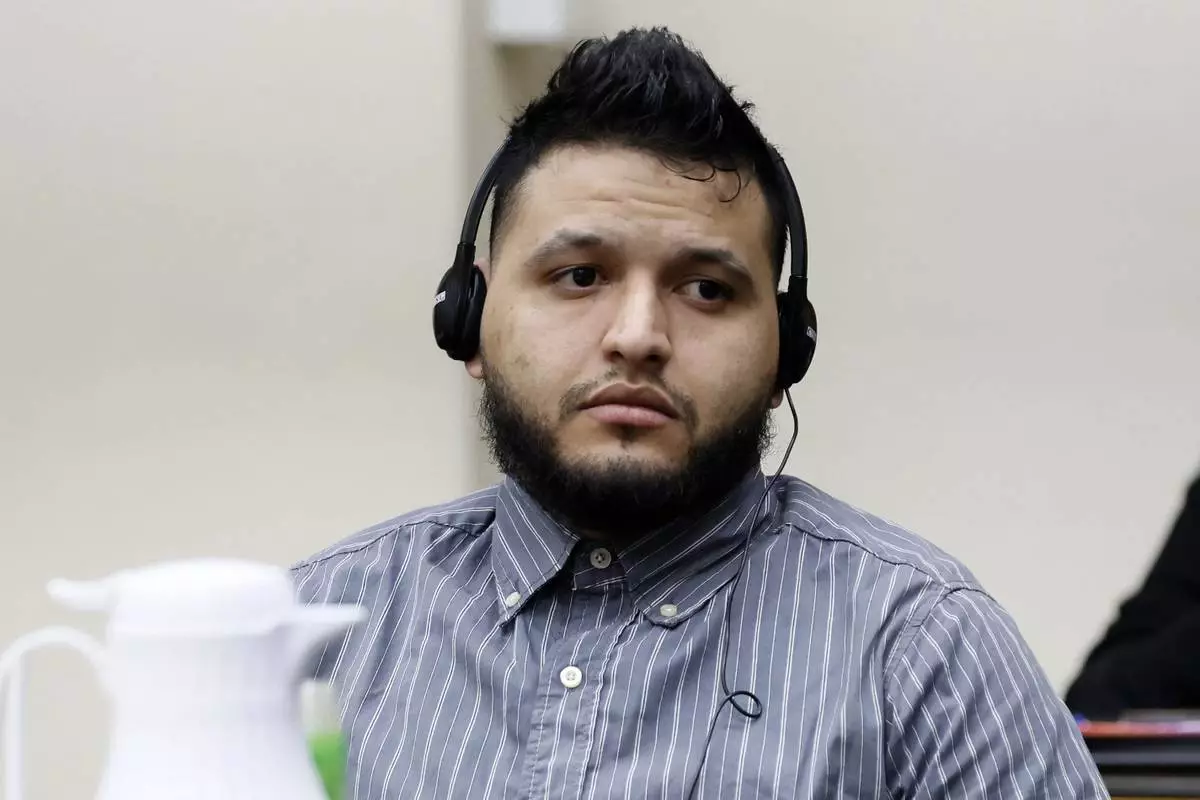
Jose Ibarra listens through an interpreter during the second day of his trial at the Athens-Clarke County Superior Court on Monday, Nov. 18, 2024, in Athens, Ga. (Miguel Martinez/Atlanta Journal-Constitution via AP, Pool)

Jose Ibarra, accused of killing a Georgia nursing student earlier this year, listens through an interpreter during his trial at Athens-Clarke County Superior Court, Friday, Nov. 15, 2024, in Athens, Ga. (Hyosub Shin/Atlanta Journal-Constitution via AP, Pool)



